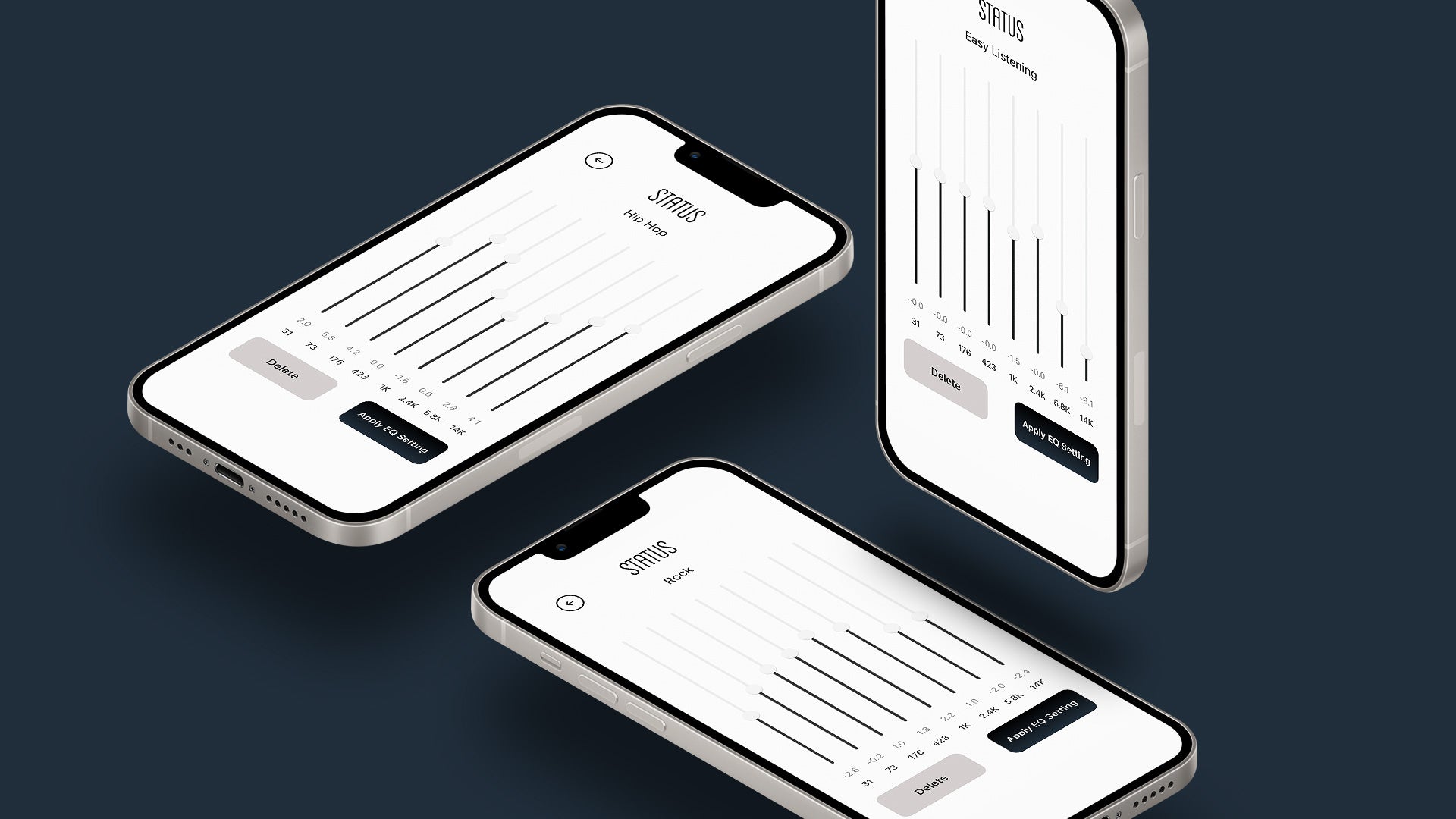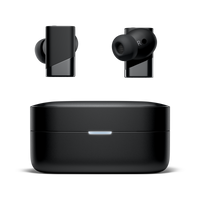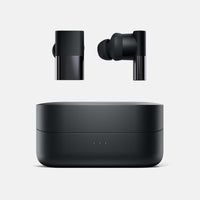
How To Use an Equalizer (EQ): A Guide for Beginners
Are you fiddling around with a mix in a DAW for the first time? Maybe looking at the Between 3 ANC’s in app EQ and wondering how to make the most of it?
In the age of customizable audio settings and bedroom production, EQ has gone mainstream.
EQ, short for equalization, is an incredibly useful audio tool that allows a listener, or sound engineer, to make adjustments to audio by amplifying and/or attenuating various frequency ranges.
Equalizers may at first seem like a daunting tool exclusively reserved for engineers and audio nerds, but using one effectively is as simple as it is rewarding.
We'll be taking a dive into how they work, what you should know in order to (properly) use one, and some tips on achieving your preferred balance. If you aren’t familiar with the concepts behind frequency and amplitude, you might want to check out our Beginner’s Guide To Soundwaves before you keep reading.
Types of Equalizers and How They Work
While all equalizers perform the fundamental function of making amplitude adjustments to particular frequency ranges, there’s some variation in how they accomplish this.
There are two primary types of EQ that we’ll go over in this article:
Graphic EQs
Graphic EQs use amplitude sliders that are assigned to fixed frequencies. Take a look at the Status Audio Between 3 ANC EQ:

Parametric EQs
Parametric EQs permit a user to choose the exact frequencies at which amplitude adjustments are made. This allows for more precise control over a balance. While parametric EQs are very useful for mixing and production, they're not quite necessary for the everyday consumer who just wants a little more bass or a little less treble from their buds.

An Important Note on Q Values and Equalizer
The "Q" value on an equalizer controls the bandwidth of the frequencies you're looking to boost or attenuate. This is a bit easier to understand with an example:
Let's say you want to boost 100 Hz by 3 dB. Whether you're making the adjustment on your in-app graphic EQ or your DAW's parametric EQ, it's important to remember that you are boosting a range of frequencies, with 100 Hz being the center point of said range. This is better illustrated with the visuals provided by a parametric EQ.
Boosting 1 kHz on the Status Audio graphic EQ would look something like this on a parametric EQ:

While 1 kHz is receiving the greatest amount of additional amplitude, amplification begins around 500 Hz and concludes around 2 kHz. Boosting 1 kHz as a singular frequency would produce a resonant and unnatural tone that simply sounds, well, bad. Boosting a range of frequencies, even a small range, results in a smoother gradient of amplification that sounds far more pleasant and natural.
The width of a boost (or subtraction) is determined by Q Value. Higher Q's result in a narrow boost with shorter bandwidths, while lower Q's result in broader boosts with larger bandwidths.

So, one more difference between graphic and parametric: parametric EQs allow users to adjust the Q value of its various bands, while most graphic EQs have fixed Q values.
However, graphic EQ’s still technically allow for some control over Q. It’s easy enough to produce a broad, low Q boost using a graphic EQ. Check out the picture below to see for yourself what I’m going on about here.

Basic EQ Techniques and Tips
While there's no "wrong" or "right" way to use an equalizer, there are some basic techniques that will help you get the balance you're looking for. We'll be going over some of those below.
Note: using an equalizer to a desirable effect requires a basic understanding of the characteristics and audio information contained in each frequency range. Check out our guide on how [different frequency ranges affect a balance](link to "Explaining the Audio Frequency Spectrum: Bass, Mids, and Treble" once article is live) if you need a quick rundown or refresher.
Subtractive EQ: Boost First
Let's say there's something in your balance that just sounds a bit too loud or present, but you can't quite pin down *what* that something is.
Start by applying a sharp and dramatic boost at different points on the spectrum, and listen to hear if the problematic element you're hearing gets louder or remains unchanged. Once you hear it get louder, you know you’re fishing in the right frequency range. Now you can subtract some amplitude from that range to clean up your balance.
By boosting before subtracting, you can essentially scout out a balance for any problem areas and corrections you may wish to make.
Fine Tuning Your Changes
Once you've found a frequency range to tweak, you can hone in on the exact amplitude changes that you're looking to make. Imagine using a camera lens with a manual focus: you go back and forth focusing in and out, making bigger to smaller adjustments until the photo's subject appears sharply in focus. In the case of EQ, you can go back and forth making big boosts and subtractions at a given band/point on the equalizer, slowly and gradually honing in on a level that sounds right to you.
Keeping it Smooth With a Roll Off
Let's recall the concept of Q that was mentioned earlier in this article. If an EQ boost is too narrow (has a high Q value), it can sound resonant, unnatural, or just plain wrong. If you find yourself making a dramatic boost in a given frequency range, you might want to smooth it out by making adjustments to the immediately preceding or proceeding frequency bands for a more natural and fluid tone. This is called a roll off. The picture below is an example of a sub bass boost on the Between 3 ANC's in-app graphic EQ that uses a mid-bass roll off into the upper bass and midrange.

Practice
If you take some time to digest what you read here, you're in a pretty good position to start using an equalizer effectively. Ultimately, using an EQ involves as much artistry as it does technical know-how. Trial, error, and practice are the only ways to get truly fluent in using one.
So give it a shot - it's fun, I promise.





